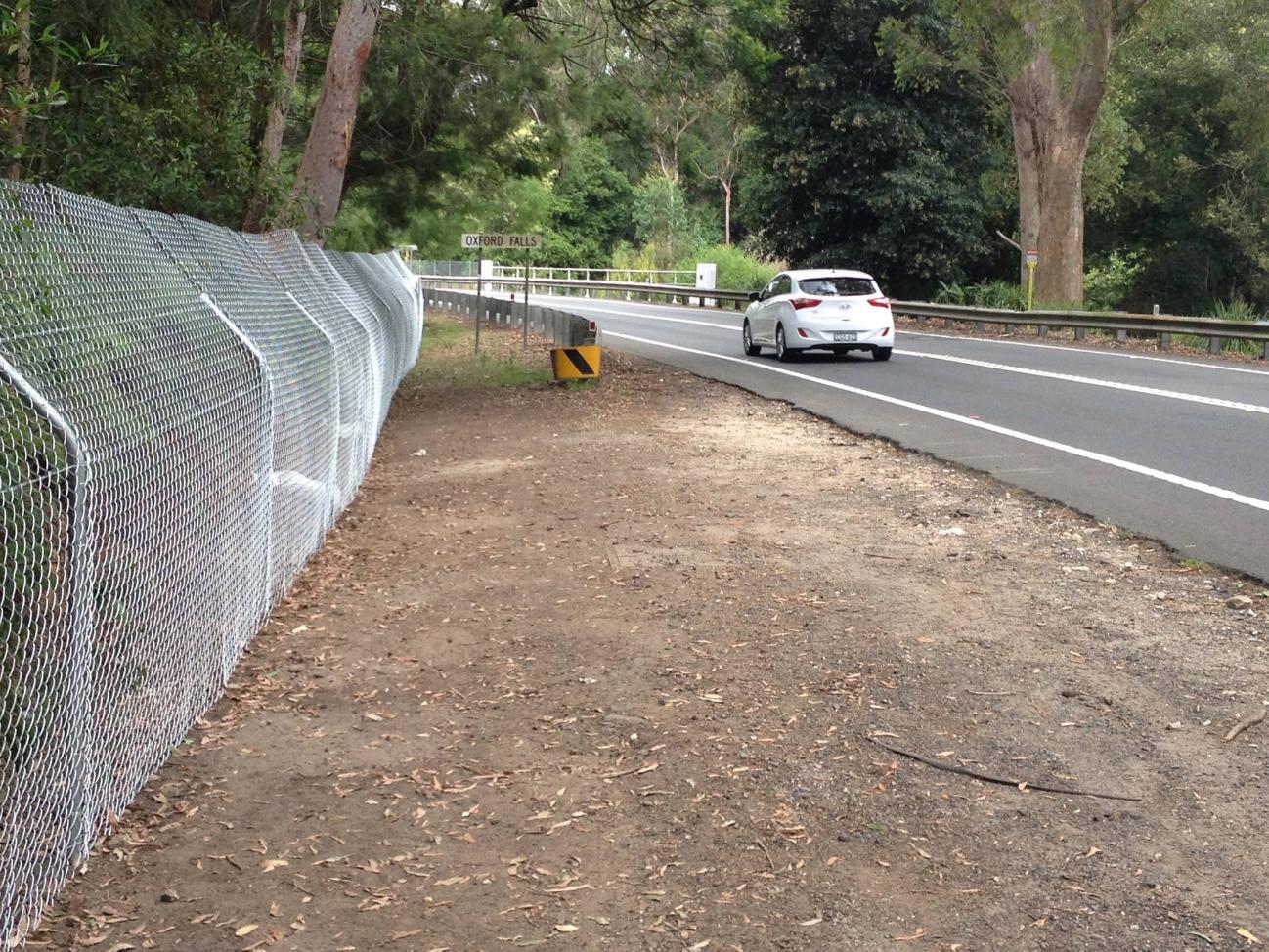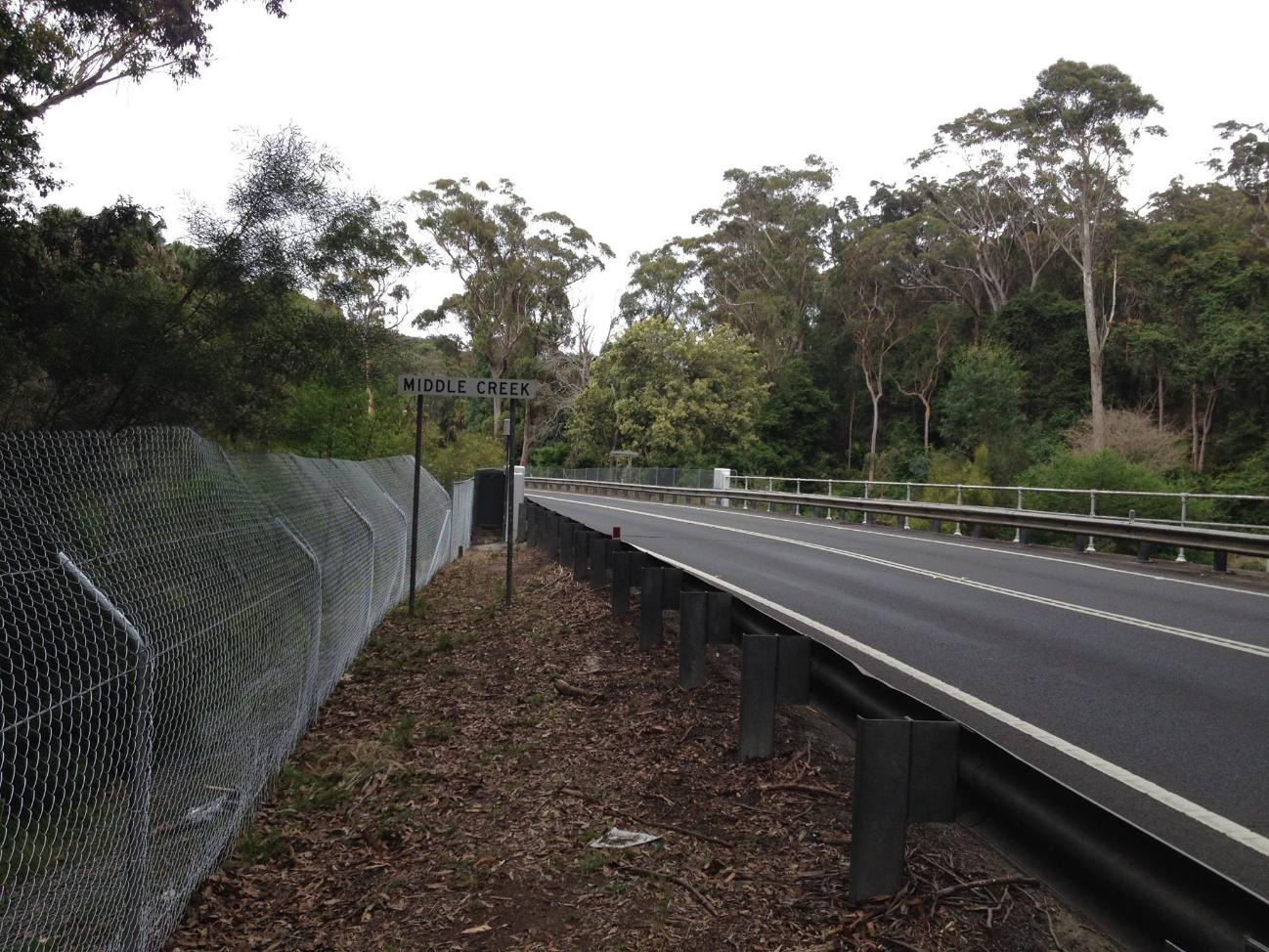November 26 - December 2, 2023: Issue 607
Ringtail Posse 10: November 2023
Stop Wildlife Roadkill Group: You Can Help By Using The Wildlife Incident Mapping Website
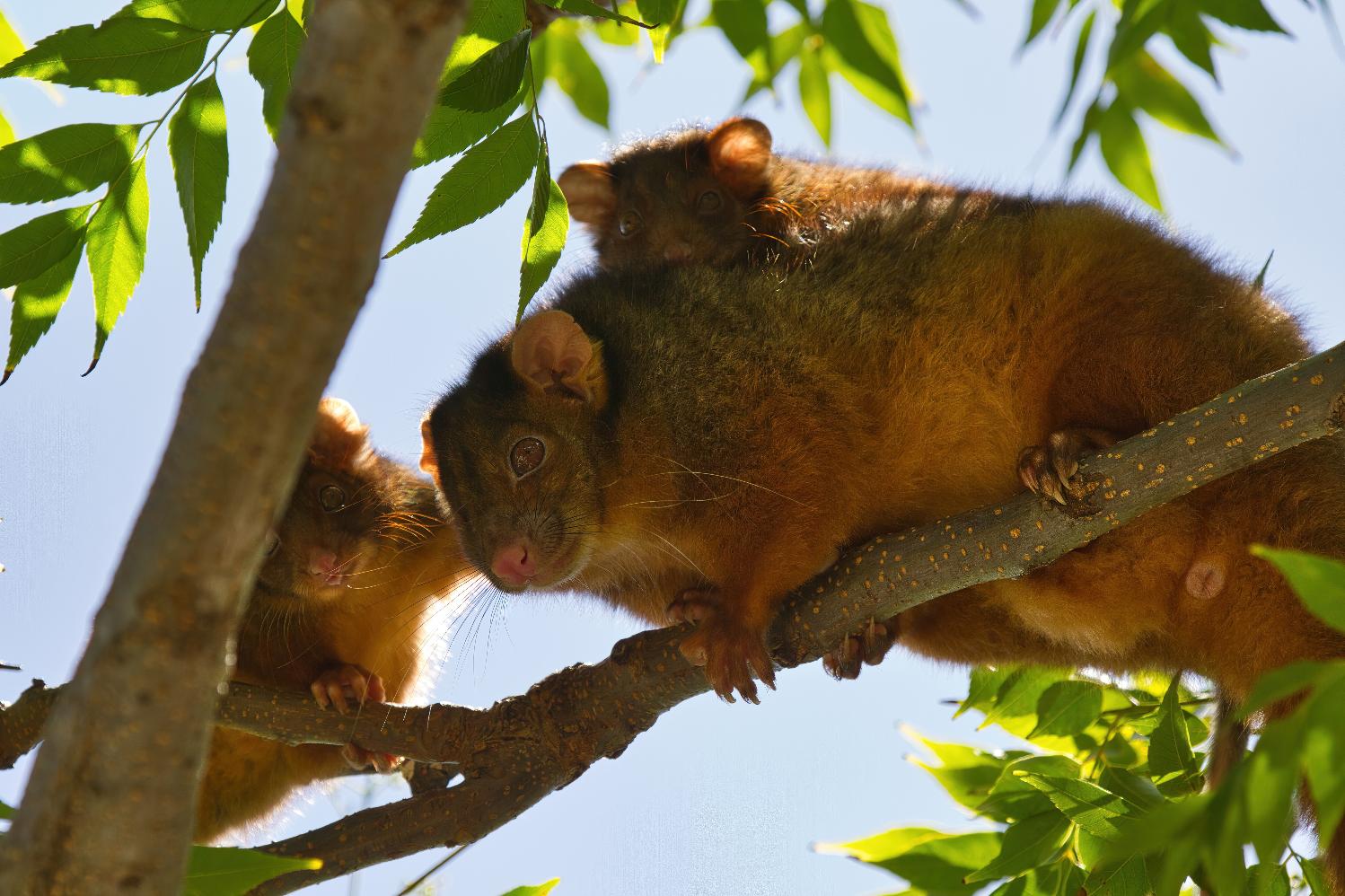
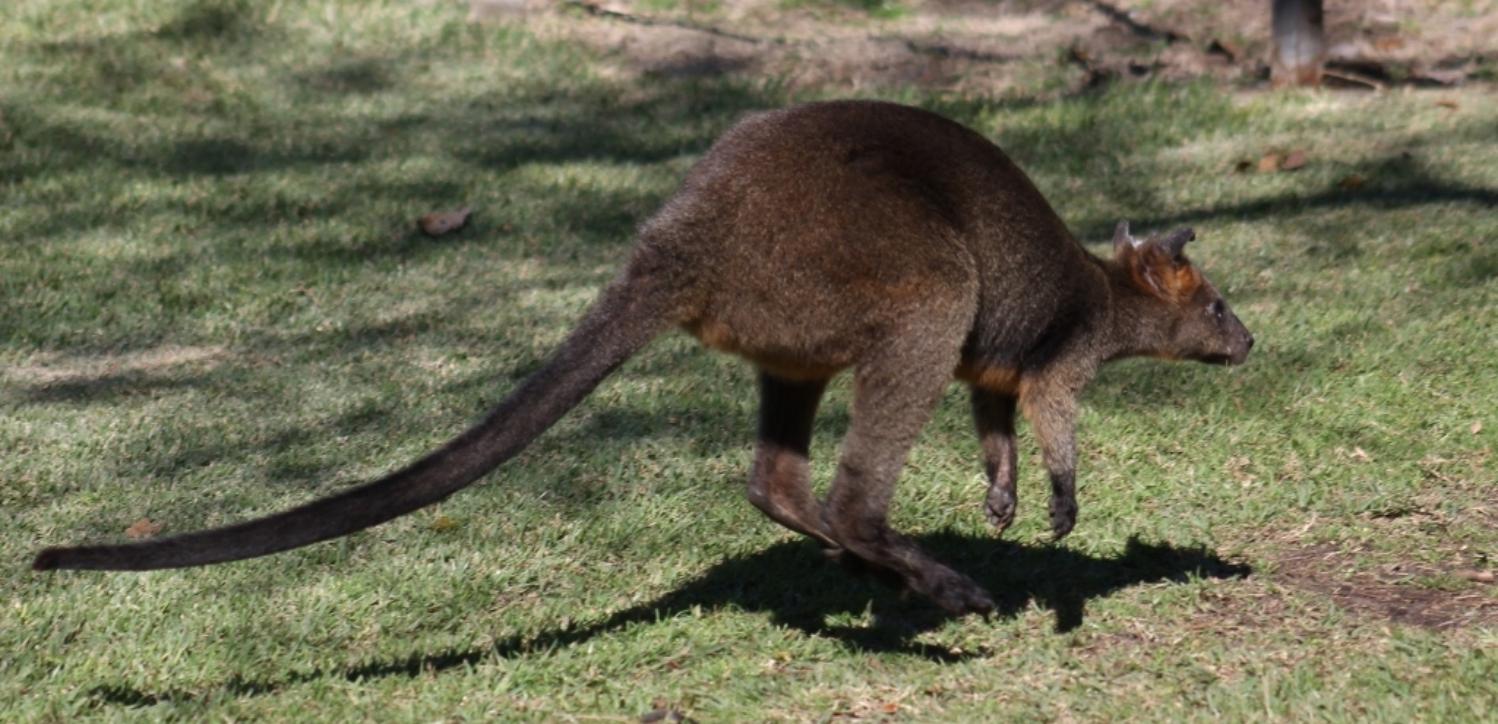
Definition from:
Ringtail: from the 'Common Ringtail Possum' which is not so common anymore in urban areas. The Common Ringtail Possum is found along the entire eastern part of Australia and south west Western Australia. They are also found throughout Tasmania. The western ringtail possum is a threatened species under State and Commonwealth legislation. In Western Australia the species is listed as Critically Endangered fauna under the Biodiversity Conservation Act 2016.
+
Posse: noun. 1 : a large group often with a common interest 2 : a body of persons summoned by a sheriff to assist in preserving the public peace usually in an emergency 3 : a group of people temporarily organised to make a search (as for a lost child) 4 : one's attendants or associates.
For the final Ringtail Posse round for 2023 we'd like to share some food for thought on why it would be great of everyone SLOWED DOWN as we head into the silly season of December, when many will clock off for the year and travel on local, regional and national roads to catch up with family and friends over the Christmas to New Years period and throughout January.
With the changes announced for Wakehurst Parkway and a consultation period closing on December 6, along with sustained and even recent calls for mitigation measures to stop wildlife being injured on our local major and smaller urban roads, the relaunch of Stop Wildlife Roadkill and encouraging residents to lodge incidents at wildlifemapping.org is now taking place.
The newest Wakehurst Parkway widening proposal involves the removal of 2.38 hectares of native vegetation and 1.42 hectares of non-native vegetation. Vegetation removal would primarily occur between Trefoil Creek and Oxford Falls Road as a result of the proposed road widening. Further information about the proposed vegetation removal can be found in Section 6.1 of the REF.
Transport for NSW states it is doing everything possible to minimise the impact to vegetation and fauna habitat, however, no rope fauna passes, fauna underpasses or overpasses form part of the Review of Environmental Factors, although widening Wakehurst Parkway to 4 lanes in these sections, and adding in the proposed cycleways, would make this road even more dangerous for local wildlife. However, the documents do state Transport for NSW will install Fauna protection fencing at targeted locations along the proposal area.
See:
- Transport For NSW Wakehurst Parkway $75+M For 4 Lanes To Oxford Falls Road West Consult 2023 + Council To Spend $31+M On Oxford Falls Culverts Etc.: TfNSW Feedback Closes December 6
- Mother Brushtail Killed On Barrenjoey Road: Baby Cried All Night - Powerful Owl Struck At Same Time At Careel Bay During Owlet Fledgling Season: calls for mitigation measures - The List of 'What You can Do' as requested - November 2023
- Spring Carnage For Our Wildlife: Out Of Date Data Shows At Least 4000 Local Rescues Annually - Lack Of 'Responsibility' Facilitates Extinctions - October 2022
Originally launched in our area in 2005 as the Northern Beaches Roadkill Prevention Committee, the data presented in the first 9 rounds of the Ringtail Posse of injured and rescued local wildlife, along with plans to increase housing and roads leading to that housing, through wildlife habitat or widening roads known to be running through wildlife corridors, underlines the necessity to stand up for and speak out for those that cannot speak for themselves - our local wildlife.
Pittwater Online News recently spoke to Conny Harris and Jacqui Marlow, who were part of the group that formed the original Northern Beaches Roadkill Prevention Committee, which is now relaunched by these two women as the Stop Wildlife Roadkill group and has been extended not only across the whole of our peninsula but across Australia.
Dr. Conny Harris and Jacqui Marlow
Conny Harris was born and educated in Germany, receiving medical degrees from the Universities of Freiberg and Hamburg. She has worked as a doctor in Germany, England, and Australia, and passed her Australian Medical Council Examination in 1994.
Dr. Conny Harris is a long-term activist in local community issues concerning bushland and wildlife, urban and non-urban development, improvement of health and waste reduction.
She has a wide knowledge of local flora and fauna, especially eucalypts, and lectures on this to the Australian Plant Society. She was also a member of the National Parks Threatened Species Committee.
In 1999 she received a grant for educating local schoolchildren in native plant identification and bush regeneration.
Conny was director of the Manly Food Cooperative, from 1998-2002, and was appointed community representative on the Northern Region Waste Management Board in 2000. She founded the Garigal Landcare Group in 2001. Her ongoing interests in organic food, bush regeneration and environmental health continue to spark new projects, including saving local wildlife trying to cross roads. See:
Jacqui Marlow has been working on preserving bushland, increasing connectivity and preventing roadkill on the major arterial roads of the Northern Beaches of Sydney since 2001. In 2005 she set up an effective community group that records roadkill on a purpose designed phone app. The resulting long-term records of roadkill on the Northern Beaches of Sydney have been used by the RMS in planning roadkill mitigation for the upgrade of Mona Vale Road East - a project Jacqui, along with the Pittwater Natural Heritage Association members, were at the core of. See:
- Reducing Roadkill On Mona Vale Road by David Palmer, Pittwater Natural Heritage Association - September 2017
- Mona Vale Road Upgrade Update: Fauna Fencing To Be Installed During Construction + June Night Works - June 2019
- Mona Vale Road (East) Upgrade: Fauna Bridge Supports Installed - August 2023
Jacqui holds a Batchelor of Science from Sydney University and is a member of numerous scientific organisations such as the Mammal Society of Australia and is also the author of peer-reviewed articles on roadkill.
Jacqui has also got out and reinstalled fauna fencing that has been damaged by flooding on Wakehurst Parkway when this could not be done for months by those responsible for the works - the money coming from her own pocket. See:
- Priorities? The Wildlife Exclusion Fences On The Wakehurst Parkway Are In A Terrible State Of Repair - March 2023
These fences are important. This map marks the swamp wallaby roadkill on the Wakehurst Parkway for 2021 to 2023.
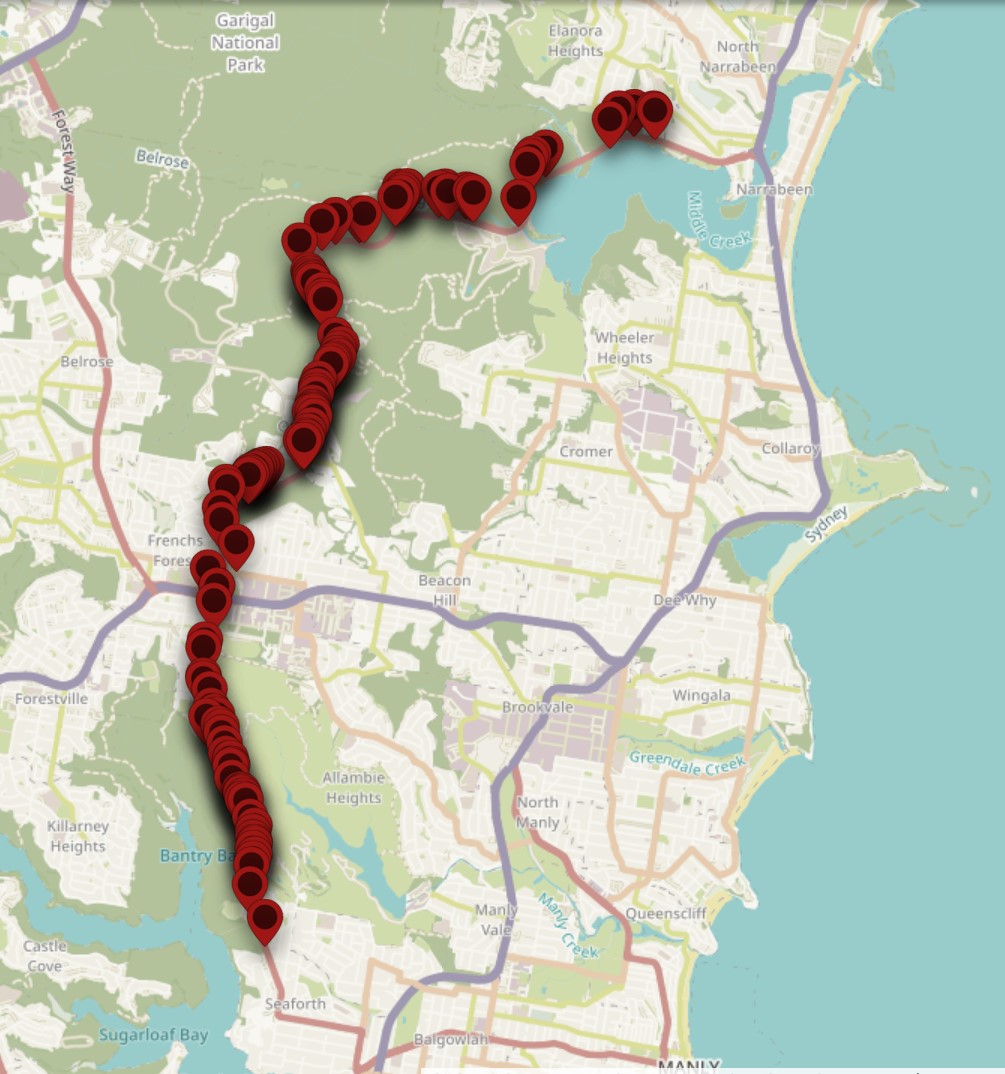
This Issue, a little bit of background and how you can help identify where we can stop wildlife being injured or killed on our roads.
The renewal and relaunch of the Stop Wildlife Roadkill of the Northern Beaches is underway, thanks to the dedication of volunteers Conny and Jacqui. What sparked this initiative originally, and what was its purpose?
Jacqui: For me, it all began when my children were learning to drive. As we drove up Mona Vale Road and reached Kimbriki Hill, we frequently encountered a line of traffic swerving around a dead wallaby on the road. I would tell the driver to pull over. I would pull the unfortunate wallaby from the road and if it was a female inspect its pouch, to ensure there was no joey.
Naturally, this was very distressing. I reached out to the RTA regarding fauna mitigation measures, but my efforts proved ineffective.
In 2005, at a Friends of Narrabeen Lagoon Committee meeting, Conny mentioned, 'I've been keeping track of roadkill, do you want to do something?' — and that's when our collaboration began.
We compiled data and presented it at a Warringah Council Meeting, where Dick Persson, the administrator at the time, took notice and actively supported our cause. The Manly Daily also played a crucial role in spreading awareness.
We organised a Public Meeting with Dan Ramp UNSW, as our academic advisor. Alex McTaggart was the local Pittwater MP while Dick Persson represented Warringah Council. WIRES and Sydney Wildlife Rescue representatives and members of the public made up the rest of the committee.
The primary goal of this meeting was to address the high rate of roadkill incidents in our area.
Conny: For me, it all began earlier when I organised a significant fundraiser for Frenchs Forest. My initial goal was to install a modest possum rope over Wakehurst Parkway. We had National Parks assess the trees, and everything was set up and ready to go. However, the RTA rejected the idea, stating, 'No, not over our road. You must prove first that it is needed. And possums are not an endangered species.'
It seemed like they were indifferent.
Afterward, I began collecting data and made an interesting discovery. The most impacted species were not possums, as expected, but swamp wallabies. I had a map and when I cycled on Saturdays to Mona Vale Hospital, I would manually write down using pen and paper exactly what I found and where. Sometimes they were shocked at the hospital (Mona Vale) because I had picked up a dead animal and had it on my bike.
Jacqui: Dan generously provided us with a GPS, which was incredibly helpful. My husband commuted to the city daily, passing through Wakehurst Parkway at dawn. He would call me and say, 'Go to this point, and you will find a dead wallaby or a dead possum’.
We subsequently developed a roadkill website, which has undergone further improvements. It provides a comprehensive view of the extent of roadkill incidents in our area.
Can individuals contribute incidents themselves?
Jacqui: Absolutely, they can. By visiting wildlifemapping.org, people can add information, including the position, the date, and details about the roadkill animal.
What was the purpose behind collecting and organising this data?
Jacqui: We needed to take this roadkill data to the RTA as they stated they wouldn’t put in any exclusion fencing on the Wakehurst Parkway unless they had data to show where it should go.
The Wildlifemapping app and website now records Australia wide and we’ve just taken it to the national Wildlife Conference and now people across Australia, including wildlife rescuers and carers and the public can record roadkill nationally.
The first two mitigation fences went in around Middle Creek because the bridges act as underpasses. The Warringah Council and the RTA paid for these fences.
I began attending conferences to get more information.
I participated in the International Conference of Environment and Transportation, held every two years in the United States.
I also went to Canada to look at where Road Ecology started as a science. Road ecology was initiated by Professor Anthony Clevenger, who designed all the big overpasses over the road near Banff for the migratory animals – many people may have seen these as they are referred to as a best-use practice.
Conny: The Wakehurst Parkway was the first place in metropolitan Sydney where retrofitting on an existing road of fauna exclusion fencing, along with a rope bridge for possums, was done by the RTA.
Jacqui: On the Parkway we have four sections of road where exclusion fences are now installed. There is the original fence at Middle Creek bridge, which we’ve jokingly called ‘Conny and Jacqui’s Bridge’ (for wildlife), so people would know where we’re talking about when they go to record roadkill, then there was another major fence section around towards the Sydney Academy of Sport
Then another section of fencing was added closer to the Middle Creek Bridge, to join the existing fence up to the cliff face.
The fourth section of fencing was installed when they were building the new hospital (NBH).
Conny: Sydney Wildlife Rescue and people like Eira and Joseph Battaglia added their support – people were standing there in koala suits holding up signs that read ‘WE NEED OVERPASSES’. So now there are several overpasses as well as fencing, around the hospital site.
Fauna rope bridge over Wakehurst Parkway near the hospital
I was a Powerful Owl when we were doing that. I remember when I visited Christmas Island, where you have a huge crab population. The amount of infrastructure which went in there is amazing and really interesting. Their approach was a) install the infrastructure, and b) a total closure of roads during the crab migration times. That is what I would have liked to see; a closure of roads during migration times as they do there.
So they have that infrastructure but at ground level, when it is that time, there is a sign that goes up ‘total closure of road this week’. This is how they stopped this species getting killed.
There are activists on the ground there too, really good people, and they were the ones who helped this happen. We cannot wait for government at any level to action these needed changes, we have to get out there and do it ourselves and keep going at it and those in these tiers of government and government departments to action what is required until it is realised. That is the only way we are going to ensure what else lives here gets to survive our impacts on this place. We have to speak up, we have to stand up.
It is very heartening to see what has happened elsewhere, at Christmas Island for example, and what can be and has been done locally.
Jacqui: They do this around the world. They just did it in Canada for the migration of the Western Toad.
People have reached out to the news service in response to our reports on your work, expressing interest in how they can help and get involved. How can they support you or contribute to the solution? What specific needs do you have, such as traffic calming devices, additional personnel, or funds for equipment and fencing?
Jacqui: We certainly require traffic calming devices in the backstreets. For instance, down the back of Belrose near the cemetery, there is a dead-end road where a significant number of wallabies are being killed.
Conny: Wallabies, when exposed to light, tend to panic, and jump directly into the source of light.
Jacqui: All main roads should have roadkill mitigation measures, including fences and underpasses along their entire length.
Wakehurst Parkway, for example, should have exclusion fencing all the way to Seaforth. Similarly, Mona Vale Road needs similar measures, from the intersection with Powderworks Road to St Ives.
Forest Way, particularly around the Supa Centre area, is another main road where there are many roadkill incidents. It too needs exclusion fencing and underpasses.
Conny: Morgan Road at Belrose is a significant roadkill blackspot. On Sunday, October 8, 2023, I discovered a dead Heath Monitor on this road near Lizard Rock. Pittwater is one of the few known listed habitat places for this increasingly rare species.
We really need something to be done along Morgan Road – we lose so much wildlife along here, so many species. It is likely we are seeing a local extinction of species occurring here too.
.jpg?timestamp=1700766473393)
Screenshot of recent seen wildlife species and fatalities on our roads - Morgan Road (part) from www.wildlifemapping.org
.jpg?timestamp=1700766545613)
Screenshot of recent seen wildlife species and fatalities on our roads - Mona Vale Road and Powderworks (part) from www.wildlifemapping.org
.jpg?timestamp=1700766589227)
Screenshot of recent seen wildlife species and fatalities on our roads - Wakehurst Parkway (part) from www.wildlifemapping.org
.jpg?timestamp=1700766620829)
Recent records from Manly to Palm Beach from www.wildlifemapping.org
What happens to the wildlife you pull off the roads?
Jacqui: Powerful owls go to the zoo (Taronga) because they do a post-mortem on their livers. The question that needs answering is ‘Do powerful owls who have come in contact with rodenticides; lose their fitness which causes them to be hit’?
All other species go to the Australian museum. We collect the most intact bodies to go to the museum. They are finding that many PhD students are going through these specimens and finding out lots of interesting things about our wildlife – for instance, one species may be split into two new species.
Another interesting fact discussed at this year’s Australian Mammal Conference relates to institutions that have programs raising Tasmanian devils,
They found that they need to feed them on roadkill, because soft food can change the morphology of their jaws. That is, their jaws are changing shape. They have worked out to keep Tassie devils’ insurance populations healthy, that they have to feed devils the food they would find in the wild – dead wallabies, as they are carrion eaters.
What else do you need for those who want to get involved?
Jacqui: We definitely need more help – we'd appreciate individuals willing to transport animal specimens to the museum. Another significant way people can assist is by documenting all roadkill incidents on wildlifemapping.org, including a photo of the animal and its location on the app.
Writing letters to local MPs urging mitigation in necessary areas is beneficial for wildlife not only in our region but across NSW and Australia.
Conny: At Madison way, there is a sign ‘Drive carefully, mummy echidnas around’ – that is also helpful. If people make signs at home and stick it on the side of the road it makes people aware where our wildlife is crossing roads, so they know to slow down – especially during spring or breeding seasons for our local wildlife.
What about funds?
Jacqui: Funds would be great. There are costs involved which come out of our pockets for repairing fences. Also when we lose an animal as roadkill, like a powerful owl which we know has chicks, it would be great to have a financial reserve so we can hire a climber to save them. The zoo will take powerful owl chicks and raise them, but we need to hire accredited climbers to retrieve the chicks in these circumstances.
If you can help, please email us on: wildlife.incident.mapping@gmail.com
Can people add incidences in there themselves?
Jacqui: yes they can; that's what we need everyone to do. If they go to wildllifemapping.org this allows them to add in;
- The position via GPS or road and suburb,
- The date,
- The animal.
Anything to add at this stage?
Both: Please SLOW DOWN on our local roads for our wildlife, especially at dusk and dawn when wildlife that feeds at night may be moving back to its nests and home range or is feeding at the side of a road on insects attracted by streetlights.
If you do hit an animal on a our roads Sydney Wildlife Rescue provides these tips:
- Drive slowly and carefully, especially at dusk, night, and dawn.
- If you accidently cause injury or encounter an injured animal, please stop to offer help if it is safe to do so.
- Ensure your own safety whenever dealing with any wildlife situation involving highways, trees, or water.
- Carry an animal rescue kit in a box in your car. Include a blanket, towel, pillowcase, scissors, torch, and safety pin.
- Always check the pouch of dead marsupials – kangaroos, wallabies, koalas, possums, gliders, bandicoots, and wombats. The pouch is where a belly button would be in a human. There could be uninjured viable young needing rescue.
Call Sydney Wildlife Rescue 24/7 on 9413 4300 or WIRES on 1300 094 737 for Wildlife Rescue Assistance
A few extra tips from Sydney Wildlife Rescue:
- Be a responsible pet guardian. Dogs and cats cause injury and death to many of our native species. Supervise pets at all times and keep dogs and cats inside the house, especially at night.
- Teach your children to love, respect and appreciate wildlife and the environment.
- Use environmentally friendly detergents and cleaning agents. Restrict use of pesticides, fungicides, and herbicides on your land. Wildlife can be poisoned by these chemicals. Ask us for more information on wildlife friendly pest control.
- Use wildlife friendly netting in your garden if you need to protect your plants from wildlife. ‘Wildlife friendly’ means white and with tiny holes that your own fingers can’t go through. Many animals are badly injured by the wrong netting.
- Retain and plant native vegetation on your land. Plants provide food, shelter, nesting sites and safe passage for wildlife. Hollows in trees are also very important. You can also attach nest boxes in your trees.
- To prevent accidental drowning in ponds and pools attach a scamper ramp or thick rope or towel securely outside the pool and put the other end in the water to help animals to climb out.
- Do not feed native wildlife but plant food trees for them. If you do feed, make sure it is their natural diet (never bread or milk!), in small quantities and in clean trays or dishes. Supply fresh water.
- To keep snakes out of your property, remove long grass, keep your lawn mown, remove rubbish piles and keep food sealed. Don’t leave pet food out overnight. Before mowing or using a whipper snipper stamp heavily on the ground around to alert a nearby snake so it will move on. Anything that attracts mice will attract snakes! Frogs in ponds and birds in cages will also attract snakes. Snake-proof your pond and cages with fine mesh netting.
- Observe wildlife from a distance. Animals can easily become distressed and injure themselves if they feel threatened.
Jacqui: In closing, David Palmer and Marita Macrae from Pittwater Natural Heritage need to be recognised for all the work they have done on roadkill mitigation for the Mona Vale Road East upgrade.
John Isles from Sydney Wildlife Rescue also needs to be recognised for all the work he has done on the wildlifemapping.org website and app.
We'd also like to thank Jenny Goodall, Lorraine Woodward and Lynleigh Greig who have been dedicated roadkill recorders over many years.
Thank you David, Marita, John, Jenny, Lorraine and Lynleigh and all our local volunteers of Sydney Wildlife Rescue and WIRES who work so hard night and day to save our local wildlife.
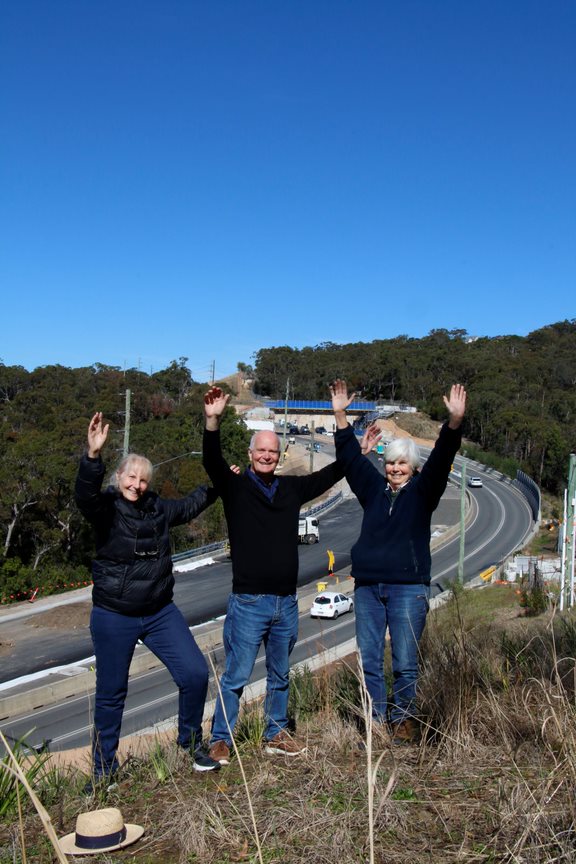
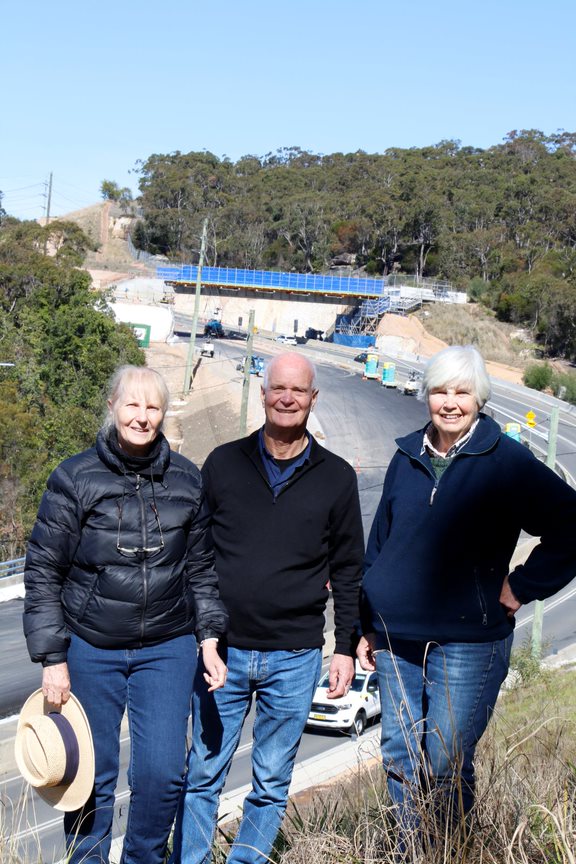
Photo: August 19 2023 - Jacqui Marlow, David Palmer and Marita Macrae celebrate the installation of the MVR East Upgrade fauna bridge supports.
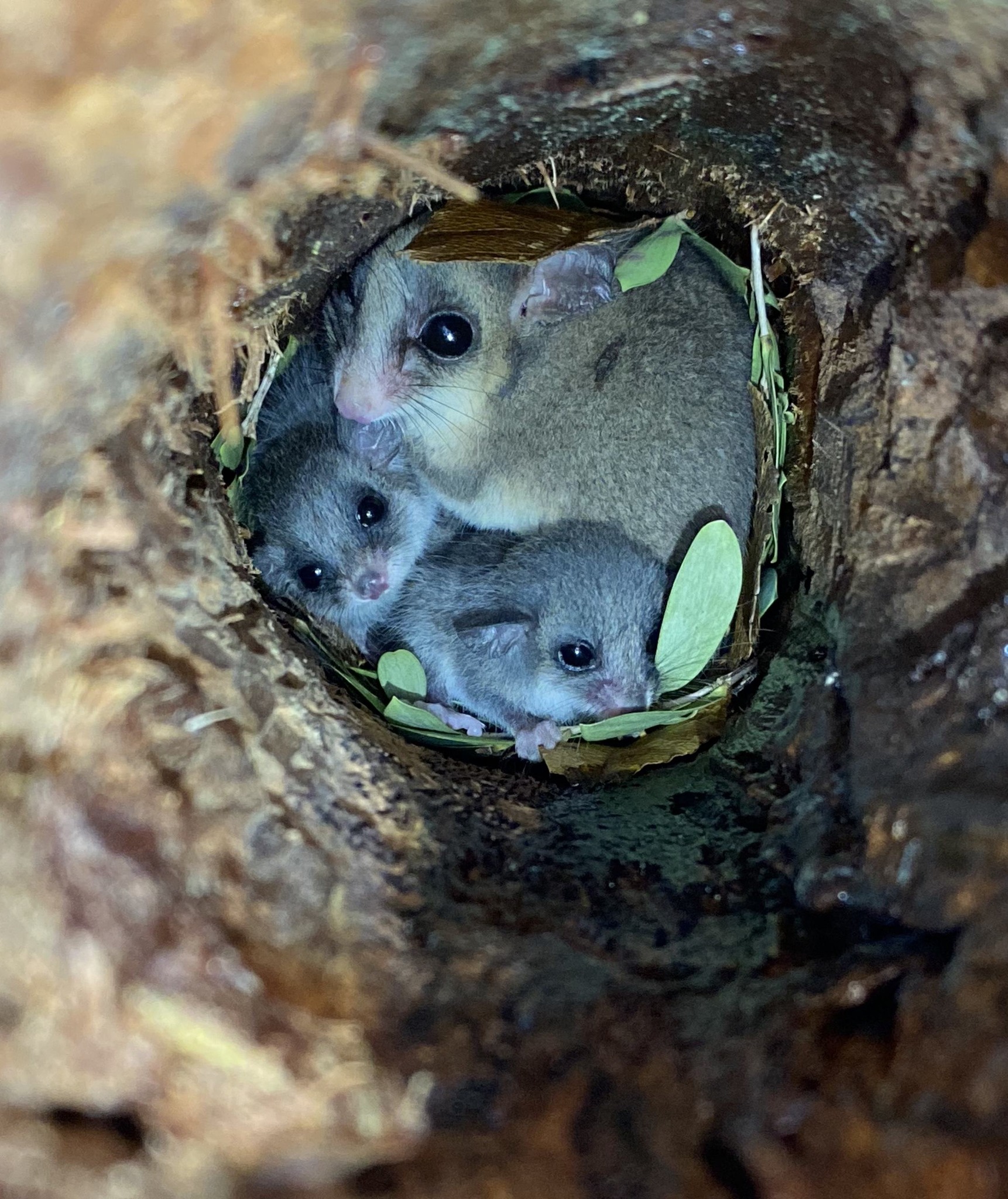
A mother Eastern Pygmy Possum (Cercartetus nanus) and her tiny babies seek refuge in a nest box at North Head Wildlife Sanctuary in Manly. Photo: Aiden Wright/Australian Wildlife Conservancy (AWC)
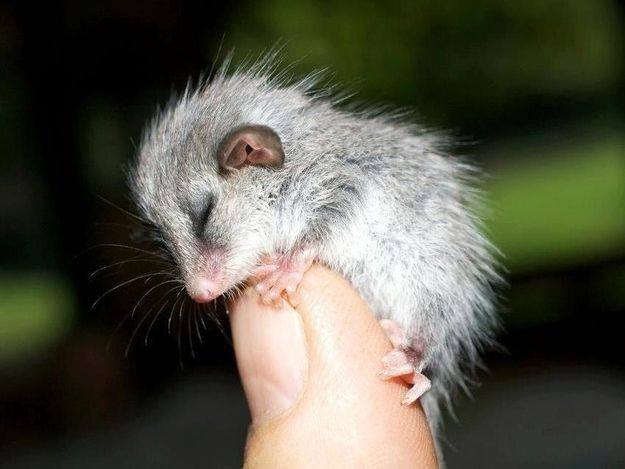
A baby Eastern Pygmy Possum- to show size scale. Photo: Janet Mayer/AWC
These possums are one of the smallest in the world, weighing up to 43 grams (less than a golf ball) when fully grown. These are a species we are losing a lot of locally and will be impacted by plans to widen Wakehurst Parkway and destroy habitat for housing at Lizard Rock.
They usually give birth to four joeys, which stay with their mother for about 75 days (when they weigh just 10 grams!) - first in a pouch before moving about by themselves, and reaching their adult size at five months old.
In 2016, eastern pygmy possums were reintroduced to North Head Wildlife Sanctuary in Sydney, where they have resumed the important process of pollinating the Eastern Suburbs Banksia Scrub, which is a critically endangered ecological community. The Sanctuary is home to the largest remaining patch of this important scrubland, of which only 3% remains.
Find out more about Eastern Pygmy Possums in AWC's species profile bit.ly/AWC-Wildlife-Eastern-Pygmy-Possum
The Heath Monitor, also known as Rosenberg’s Goanna (Varanus rosenbergi), is classified as Vulnerable in New South Wales.
The heath monitor is found in habitat close to sea level and at elevations below 1500 metres asl. The population in New South Wales, isolated and suspected to be a sister species, is found at high elevations that include occurrences above the snow-line in the mountainous regions of eastern Australia.
Regionally, it is classified as Endangered in the Mount Lofty Ranges, Northern and Yorke, Eyre Peninsula, Murray-Darling Basin, and Southeast regions of South Australia.
Why is the Heath Goanna Endangered?
- Habitat loss, degradation and fragmentation through land clearance and grazing has reduced the amount of suitable habitat available to the Heath Goanna. They need large areas of native vegetation to find enough food and maintain sustainable populations.
- Removal of termite mounds (used to incubate eggs) and fallen trees and logs (used for shelter) from the bush and grazing land, reduces vital habitat for these goannas.
- Predation by cats, foxes and dogs.
- High road mortality, particularly in areas with sealed roads (with higher speed limits) and extensive road networks
Rosenberg’s Goanna reaches up to 1.5 metres in length. It is dark grey above, finely spotted with yellow or white, and with paired, blackish cross-bands from the neck to the end of the tail. The pairs of narrow, regular bands around the entire length of the tail are a distinguishing feature, separating it from the more common Lace Monitor V. varius, which has very wide, light and dark bands towards the tip of the tail. Rosenberg’s Goanna also has distinct, finely barred “lips”, whereas the Lace Monitor has far broader bands around the snout. A pale-edged black stripe runs from the eyes, across the ears and onto the neck. Juveniles are brighter in colour, having an orange wash on the sides of the face and body.
.jpg?timestamp=1700768981830)
Photo Paul Asman and Jill Lenoble - heath goanna Varanus rosenbergii
- INGLESIDE LAND RELEASE ON AGAIN BUT MANY CHALLENGES AHEAD by David Palmer
- Once Was Barranjoey/Barrenjui by A J Guesdon
- Connecting wildlife habitats to prevent road kill by David Palmer, Pittwater Natural Heritage Association
- Bill To Facilitate Mona Vale Road Upgrades Passes: Vital Fauna Bridge Discussed - Stage 3, Mona vale Road Upgrade- West, one step closer
